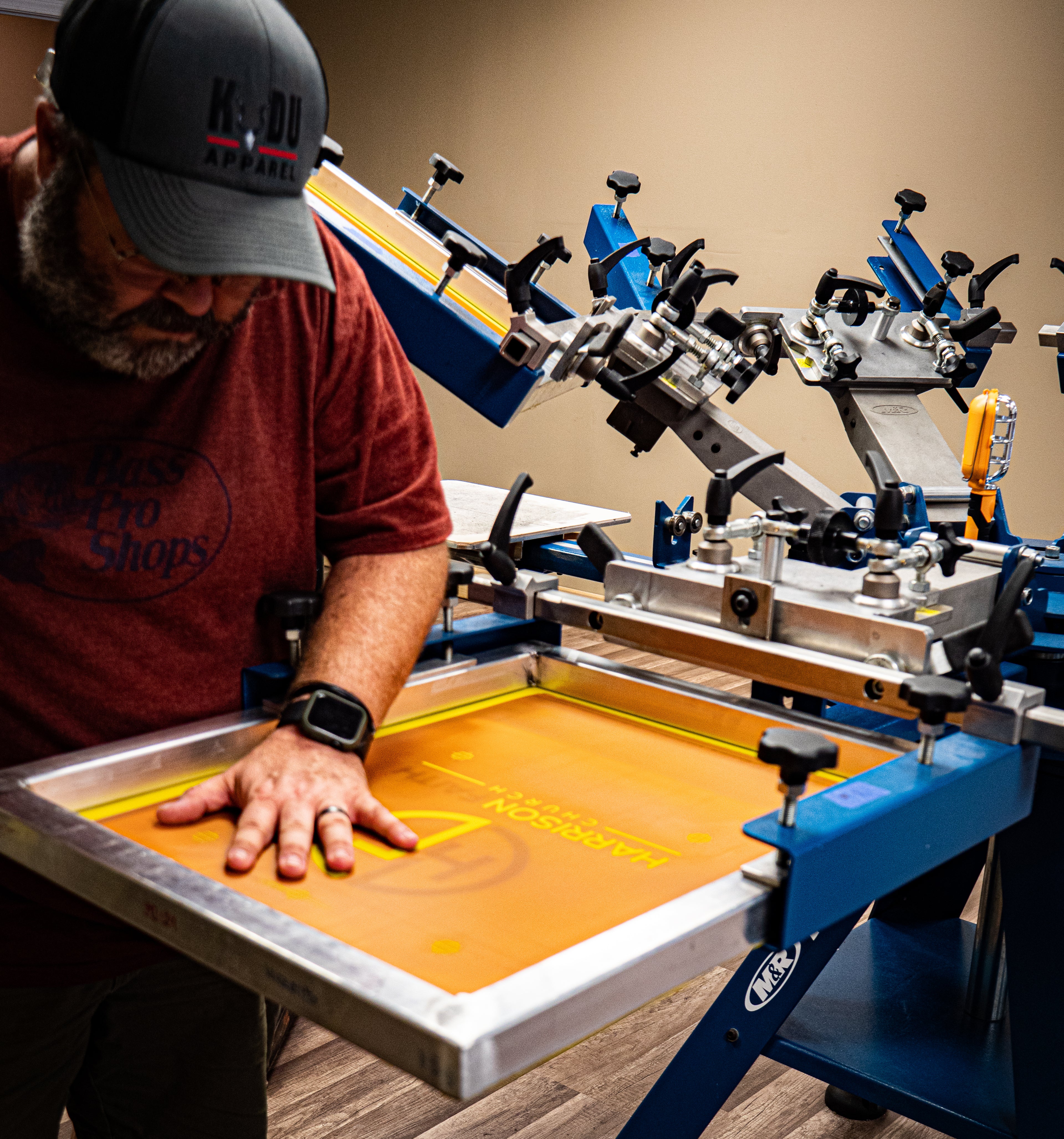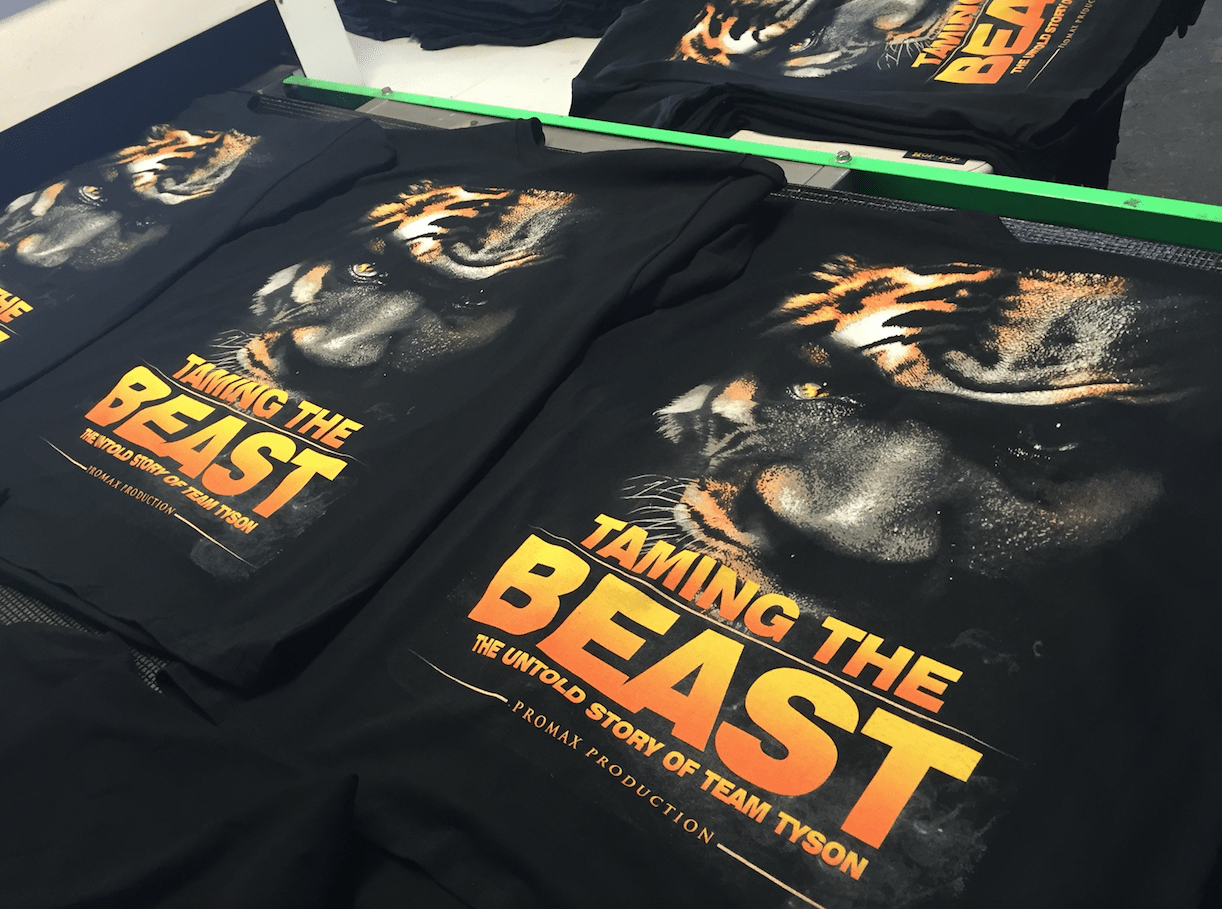Creative T-Shirt Printing Ideas for Small Brands
Creative T-Shirt Printing Ideas for Small Brands
Blog Article
Screen Printing Uncovered: Everything You Need to Find Out About Tee Shirt and Garment Printing Techniques
If you've ever before wondered how those dynamic styles finish up on your favorite tee shirts, you remain in the appropriate location. Screen printing is an interesting approach that incorporates art with strategy, providing countless possibilities for creativity. Recognizing the fundamentals, from equipment to ink selections, can substantially impact your results. Ready to discover the crucial components that make screen printing an art form? Allow's reveal the information that can elevate your projects.
The Essentials of Display Printing: Exactly How It Works
When you dive into screen printing, you'll uncover it's both a science and an art. At its core, display printing entails developing a stencil, or display, that allows ink to pass via only in certain areas.
Position the screen over the fabric, after that use a squeegee to push ink with the screen onto the garment. Each action is important, and understanding them will raise your screen printing skills, transforming straightforward garments into unique, expressive items.
Kinds Of Screen Printing Strategies
Once you comprehend the essentials of display printing, it's time to check out the numerous strategies that can elevate your designs. One preferred method is typical screen printing, where ink is pushed with a stenciled display. This strategy is wonderful for bold, dynamic shades. Then there's water-based ink printing, which provides a softer feel and is eco-friendly, however it calls for a various approach to curing.
If you're aiming for fine information, consider discharge printing. This method gets rid of dye from the textile, leaving a soft, classic look. An additional alternative is plastisol printing, understood for its durability and vibrant colors, making it a favorite for numerous brand names. Lastly, experiment with halftone printing to develop slope results and complex layouts. Each method has its special appeal, so don't hesitate to try them bent on find what matches your design best!
Important Tools for Screen Printing
To achieve spectacular lead to display printing, having the best devices is basic. You'll require a strong display printing framework, which holds the mesh that transfers your design onto the garment. Next, buy top notch squeegees; these are essential for using ink evenly across the display. You'll also require a great exposure device to produce your displays, in addition to a washout booth for cleansing them after use. A trustworthy warmth resource, like a conveyor dryer or warmth press, is critical for treating your prints to guarantee durability. Don't forget a correct work space, outfitted with tables and storage for your materials. Finally, safety equipment, such as gloves and masks, will certainly maintain you safe from chemicals and inks. With the right devices, you'll be well on your means to creating professional-quality prints.
Selecting the Right Inks and Materials
When picking inks and materials for display printing, you require to take into account the sort of ink that functions ideal for your project. Think of textile compatibility to assure your layouts look last and fantastic long. Explore eco-friendly ink alternatives to make your printing procedure much more lasting.
Sorts Of Display Inks
Picking the ideal screen ink is vital for attaining vibrant, durable prints that meet your project's demands. There are a number of kinds of screen inks to examine. Plastisol ink is prominent for its adaptability and ease of usage, providing superb color opacity on dark materials. Water-based ink, on the various other hand, uses a softer feel and is environmentally friendly, making it optimal for those seeking to reduce their environmental effect. Discharge inks get rid of color from the textile, causing a soft, vintage look however require details handling. Specialized inks, such as glow-in-the-dark or metal, can include unique effects to your styles. Evaluate your job demands and select the ink that lines up best with your desired end result.

Fabric Compatibility Factors To Consider
Comprehending textile compatibility is essential for achieving high-grade display prints, especially because various materials react distinctively to numerous inks. When picking inks, think about the fabric kind-- cotton, polyester, or blends. For cotton, water-based inks function well, using gentleness and breathability. Polyester, on the other hand, usually needs plastisol inks for much better bond and vivid shades. You may need to make use of a mix of both kinds if you're printing on blends. Always check your inks on example material to ensure they stick appropriately and maintain shade stability. In addition, bear in mind that material weight and texture can affect the final result, so selecting the appropriate ink and product combination is crucial for your task's success.
Eco-Friendly Ink Options
Green inks are ending up being a prominent choice for screen printers who want to minimize their ecological influence while preserving high quality. When choosing inks, consider water-based inks, which are much less dangerous and much easier to clean up compared to conventional solvents.
Additionally, try to find inks made from eco-friendly resources, such as soy or vegetable-based options. By selecting the appropriate inks and products, you'll not only produce stunning designs however likewise add to a much more sustainable printing process. Make the switch, and your prints will reflect your commitment to the setting!
Preparing Your Design for Screen Printing

Submit Format Needs
To ensure your style looks sharp and vivid on material, you'll need to pay close focus to submit format requirements for display printing. Beginning with vector data like AI or EPS, as they can be scaled without losing top quality. If you use raster photos, choose high-resolution files, such as TIFF or PNG, ideally at 300 DPI. Prevent making use of JPEGs, as they can shed clearness when resized. Likewise, see to it your layout has a transparent history to avoid undesirable white edges on your prints. Lastly, keep shade modes in mind; CMYK is conventional for display printing, so convert your RGB makes as necessary. By following these guidelines, you'll set your art work up for a successful print.
Shade Separation Strategies
Color splitting up is an important action in preparing your style for screen printing, and grasping it can significantly boost your print high quality. You'll need to damage your style into private shades, as each shade calls for a separate screen throughout printing. Start by determining all the colors in your design and produce layers each. You can make use of software program like Adobe Photoshop or Illustrator to isolate and separate colors properly. Be specific to save each layer as a separate data, usually in a format like TIFF or PSD. This accuracy not just assures precise color depiction however likewise improves the printing process. By paying focus to color separation, you'll accomplish dynamic and specialist lead to your screen-printed garments.
Resolution and Size
Accomplishing the most effective cause screen printing starts with guaranteeing your layout has the best go to the website resolution and size. Preferably, your art work should be at least 300 DPI (dots per inch) for sharp, clear prints. Your final product may look amateur and pixelated. if you use lower resolution.
When it involves size, take into consideration the measurements of your print area. Style your artwork to match the final print size, ideally developing it in check that the real dimensions you'll be publishing. This way, you'll prevent any type of unforeseen scaling concerns.
Constantly check your design in both vector and raster layouts. Vector graphics can be scaled without shedding quality, making them ideal for screen printing. Preparing appropriately will assure your design looks amazing on every garment!
Step-by-Step Display Printing Refine
Display printing is a vibrant process that allows you to produce vivid designs on various surface areas. To begin, you'll require a display, solution, and your chosen ink. Prepare your display by cleansing it completely. Next off, apply the emulsion equally and allow it dry in a dark location. When completely dry, reveal your display to light with your design positioned on it, which will solidify the emulsion where the light hits, developing a stencil - screen printing kit.
After rinsing the unexposed emulsion, your display prepares. Establish it up on your printing surface area and straighten your garment underneath it. Put ink onto the display and make use of a squeegee to push the ink through the pattern onto the textile. Lift the display meticulously and allow the print completely dry. Cure the ink making use of heat to guarantee toughness. That's it! You have actually efficiently display published your design.
Tips for Effective Display Printing Projects
While you're diving right into your screen printing tasks, remember that preparation is key to success. Beginning by collecting all your products-- inks, garments, screens, and squeegees. A clean office helps prevent undesirable mistakes, so clean up before you begin.
Next, confirm your art work is high-resolution and effectively sized for your garment. Check your display for correct exposure and tidy it completely to avoid spots. When blending your inks, follow the maker's standards to accomplish the appropriate uniformity.
Throughout printing, use even stress with your squeegee for regular outcomes. Don't rush; take your time to confirm each print fulfills your requirements. After printing, allow your garments dry entirely before managing or packaging them.
Finally, always keep a sample of your help future recommendation. By doing this, you can evaluate your progression and enhance your techniques with time. Satisfied printing!

Regularly Asked Questions
For how long Does It Require To Establish up a Screen Printing Job?
Establishing a screen printing job typically takes around half an hour to an hour. You'll prepare the displays, mix inks, and adjust journalism. The time differs based on intricacy and experience, so remain organized!
Can I Publish on Various Material Keys In Utilizing the Exact Same Strategy?
Yes, you can publish on different material kinds using the same technique, yet you'll require to change your inks and settings. Some materials take in ink in a different way, so trying out warranties the most effective outcomes for each product.
What Are Typical Blunders to Stay Clear Of in Display Printing?
When screen printing, stay clear of typical mistakes like utilizing the wrong ink, overlooking proper direct exposure times, or skipping pre-press checks. Constantly test your arrangement and preserve clean click over here now displays to ensure top quality outcomes each time.
How Can I Correctly Clean and Keep My Display Printing Devices?
To appropriately tidy and keep your display printing tools, you ought to regularly clean displays with suitable solvents, examine squeegees for wear, and assure all tools are stored dry and dust-free. Consistency protects against expensive repair work and boosts performance.
Is Display Printing Ecologically Pleasant Compared to Other Approaches?
Screen printing can be extra eco-friendly than various other methods, particularly if you make use of eco-conscious products and water-based inks. By picking sustainable materials and practices, you lower waste and minimize your effect on the earth.
Screen Printing Uncovered: Whatever You Need to Know Regarding T-Shirt and Garment Printing Methods
At its core, display printing involves developing a stencil, or screen, that allows ink to pass with just in particular locations. Position the display over the textile, then utilize a squeegee to press ink via the display onto the garment. One preferred method is standard screen printing, where ink is pushed with a stenciled display.When selecting inks and products for display printing, you need to take right into account the kind of ink that works ideal for your task.
Report this page